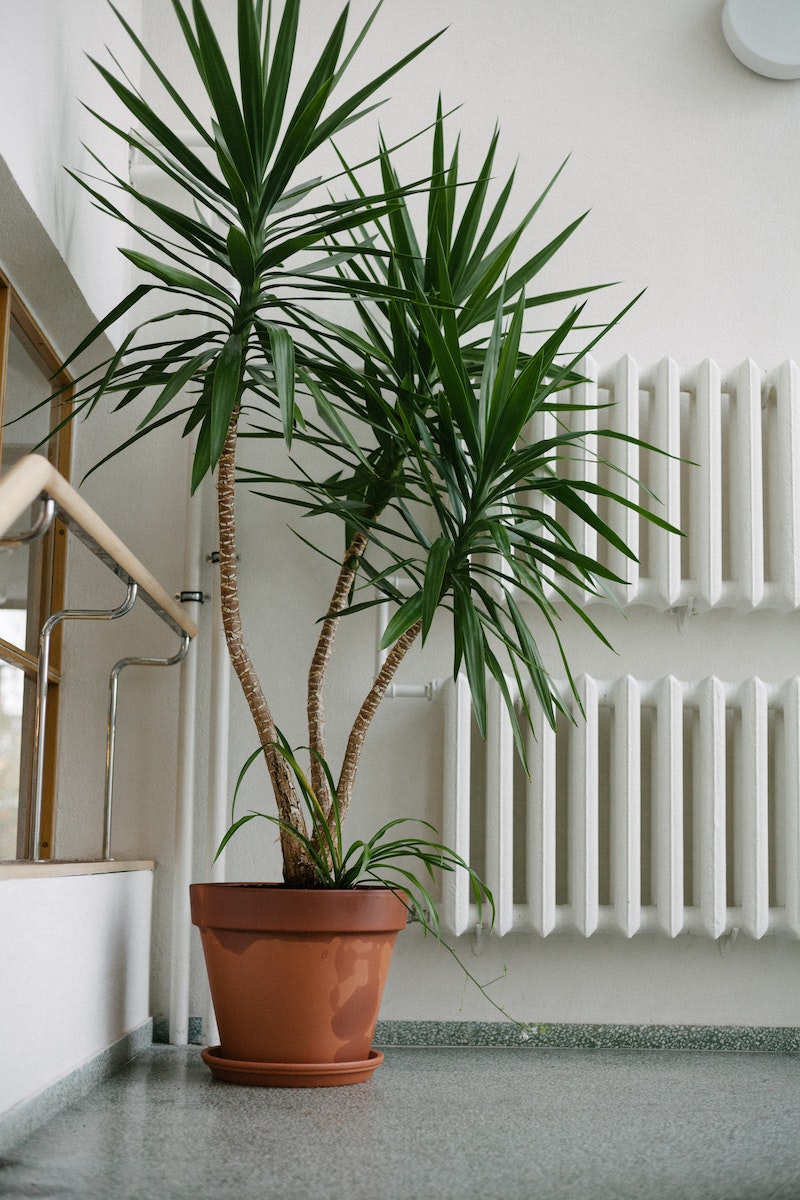Indoor plants are the perfect way to bring life and freshness into your home or office space. But not all plants are suited for indoor environments. Trees, in particular, are known to be finicky and require a lot of care and attention. However, there are several trees that can thrive indoors with the right care and environment. In this article, we will discuss 15 trees that can be grown indoors, their benefits, and how to care for them to ensure their longevity.
Why Grow Trees Indoors?
Before delving into the types of trees that can be grown indoors, it’s essential to understand the benefits of growing trees indoors. Trees have been scientifically proven to have several health benefits, including:
- Improving air quality: Trees absorb carbon dioxide and produce oxygen, making them great for improving indoor air quality. They also absorb other pollutants such as benzene and formaldehyde, making the air cleaner and healthier to breathe.
- Reducing stress: Trees are known to have a calming effect on people, reducing stress and anxiety.
- Boosting creativity and productivity: Being surrounded by nature has been shown to increase creativity and productivity levels.
With these benefits in mind, it’s easy to see why growing trees indoors can be an excellent addition to any space.
15 Trees That Can Be Grown Indoors
- Fiddle Leaf Fig (Ficus lyrata): This tree is known for its large, violin-shaped leaves and is a popular choice for indoor spaces. It requires bright, indirect sunlight and needs to be watered once a week.
- Rubber Plant (Ficus elastica): This tree is known for its shiny, rubbery leaves and is easy to care for. It requires bright, indirect sunlight and needs to be watered once a week.
- Snake Plant (Sansevieria trifasciata): This tree is also known as the “mother-in-law’s tongue” and is incredibly easy to care for. It can survive in low light and only needs to be watered once every two weeks.
- Chinese Money Plant (Pilea peperomioides): This tree is known for its round, coin-shaped leaves and is easy to care for. It requires bright, indirect sunlight and needs to be watered once a week.
- Norfolk Island Pine (Araucaria heterophylla): This tree is known for its soft needles and can grow up to 10 feet tall indoors. It requires bright, indirect sunlight and needs to be watered once a week.
- Umbrella Tree (Schefflera arboricola): This tree is known for its umbrella-shaped leaves and is easy to care for. It requires bright, indirect sunlight and needs to be watered once a week.
- Lemon Tree (Citrus limon): This tree is known for its fragrant blooms and delicious fruit. It requires bright, direct sunlight and needs to be watered once a week.
- Weeping Fig (Ficus benjamina): This tree is known for its weeping branches and is a popular choice for indoor spaces. It requires bright, indirect sunlight and needs to be watered once a week.
- Bird’s Nest Fern (Asplenium nidus): This tree is known for its unique, nest-shaped leaves and is easy to care for. It requires low to medium light and needs to be watered once a week.
- Swiss Cheese Plant (Monstera deliciosa): This tree is known for its large, fenestrated leaves and is a popular choice for indoor spaces. It requires bright, indirect sunlight and needs to be watered once a week.
- Dwarf Banana Tree (Musa acuminata): This tree is known for its lush foliage and can produce small, edible bananas indoors. It requires bright, direct sunlight and needs to be watered once a week.
- Areca Palm (Dypsis lutescens): This tree is known for its feathery fronds and is a popular choice for indoor spaces. It requires bright, indirect sunlight and needs to be watered once a week.
- Dracaena (Dracaena spp.): This tree is known for its long, spiky leaves and comes in several varieties, including the dragon tree, corn plant, and Janet Craig. It requires low to medium light and needs to be watered once a week.
- Pachira Money Tree (Pachira aquatica): This tree is known for its braided trunk and is believed to bring good luck and prosperity. It requires bright, indirect sunlight and needs to be watered once a week.
- Calamondin Orange Tree (Citrus x citrofortunella): This tree is known for its fragrant blooms and edible fruit. It requires bright, direct sunlight and needs to be watered once a week.
These 15 trees are just a few of the many varieties that can be grown indoors. When selecting a tree to grow indoors, it’s essential to consider the space you have available, the amount of sunlight the tree will receive, and how much maintenance it will require.
Tips for Caring for Indoor Trees
Growing trees indoors can be a rewarding experience, but it’s essential to provide the right environment and care to ensure their longevity. Here are some tips for caring for indoor trees:
- Choose the right pot: When selecting a pot for your indoor tree, choose one that is slightly larger than the root ball. Make sure the pot has drainage holes to prevent water from pooling at the bottom.
- Use the right soil: Use a high-quality potting mix that is designed for indoor plants. Avoid using garden soil, as it can be too dense and heavy for indoor plants.
- Water regularly: Most indoor trees need to be watered once a week, but the frequency may vary depending on the tree’s species and size. Before watering, check the soil’s moisture level by inserting your finger about an inch deep. If the soil feels dry, it’s time to water.
- Provide adequate sunlight: Most indoor trees require bright, indirect sunlight to thrive. However, some trees, such as the lemon tree and calamondin orange tree, require bright, direct sunlight. Make sure to place your tree in a spot where it will receive the right amount of light.
- Monitor humidity levels: Indoor environments can be dry, which can be detrimental to some tree species. To increase humidity levels, place a tray of water near your tree or use a humidifier.
- Prune regularly: Pruning your indoor tree can help promote growth and keep it healthy. Remove any dead or yellowing leaves and prune back any branches that are growing too long.
By following these tips, you can ensure that your indoor tree thrives and brings beauty and freshness to your space.
Benefits of Using Trees in Home Decor
In addition to the health benefits of growing trees indoors, using trees in home decor can also have aesthetic benefits. Here are some ways that trees can enhance your home decor:
- Adds color and texture: Trees come in many varieties and can add color and texture to your space. From the lush foliage of the fiddle leaf fig to the unique shape of the bird’s nest fern, trees can be a beautiful addition to any room.
- Makes a statement: Large indoor trees, such as the Norfolk Island pine or dwarf banana tree, can make a statement in any space. These trees can add a bold, dramatic touch to your home decor.
- Creates a focal point: Trees can be used to create a focal point in a room. Placing a large tree in a corner or near a window can draw the eye and create visual interest.
- Enhances natural light: Trees can help enhance natural light in a room by filtering and diffusing sunlight. This can create a warm, welcoming atmosphere.
- Adds a sense of calm: Trees have a calming effect on people and can add a sense of peace and tranquility to your space.
- Improves air quality: As previously mentioned, trees can improve indoor air quality by absorbing pollutants and producing oxygen.
By incorporating trees into your home decor, you can enjoy both the aesthetic and health benefits of these beautiful plants.
Factors to Consider When Growing Trees Indoors
While growing trees indoors can be a great way to bring nature into your space, there are several factors to consider to ensure your tree thrives. Here are some factors to consider when growing trees indoors:
- Space: Different tree species require different amounts of space. Make sure you have enough room to accommodate the tree’s size and growth rate.
- Light: Most indoor trees require bright, indirect sunlight to thrive. Make sure your tree is placed in a spot where it will receive the right amount of light.
- Temperature: Indoor trees prefer temperatures between 60-75°F (15-24°C). Avoid placing your tree near drafty windows or doors, which can cause temperature fluctuations.
- Humidity: Most indoor trees prefer high humidity levels. If your home is dry, consider using a humidifier or placing a tray of water near your tree.
- Soil: Use a high-quality potting mix that is designed for indoor plants. Avoid using garden soil, which can be too dense and heavy for indoor plants.
- Watering: Most indoor trees need to be watered once a week, but the frequency may vary depending on the tree’s species and size. Make sure to check the soil’s moisture level before watering.
By considering these factors, you can create the ideal environment for your indoor tree to thrive.
Common Problems When Growing Trees Indoors
Growing trees indoors can be challenging, and there are several common problems that can arise. Here are some of the most common problems when growing trees indoors and how to fix them:
- Overwatering: Overwatering is a common problem when growing trees indoors. It can cause root rot, which can be fatal to the tree. To fix overwatering, allow the soil to dry out between waterings and avoid watering on a set schedule.
- Underwatering: Underwatering can cause the tree to become dehydrated and wilt. To fix underwatering, make sure to water the tree thoroughly and consistently.
- Lack of sunlight: Most indoor trees require bright, indirect sunlight to thrive. If your tree isn’t getting enough sunlight, it may become weak and leggy. To fix this, move the tree to a brighter spot or consider using a grow light.
- Pests: Indoor trees can be susceptible to pests such as spider mites, mealybugs, and scale insects. To prevent pests, make sure to keep the tree’s leaves clean and free of dust. If pests are present, use an insecticidal soap or oil spray.
- Disease: Indoor trees can be susceptible to fungal diseases such as powdery mildew and root rot. To prevent disease, make sure to provide proper airflow around the tree and avoid overwatering.
By being aware of these common problems, you can take steps to prevent them and ensure your indoor tree stays healthy.
Conclusion
Growing trees indoors can be a great way to bring nature into your space and enjoy the many health benefits of trees. From the popular fiddle leaf fig to the unique bird’s nest fern, there are several types of trees that can thrive indoors with the right care and environment. By considering factors such as space, light, temperature, and humidity, you can create the ideal environment for your indoor tree to thrive.
When caring for indoor trees, it’s essential to choose the right pot and soil, water regularly, provide adequate sunlight, monitor humidity levels, and prune regularly. By following these tips, you can ensure that your indoor tree stays healthy and adds beauty and freshness to your space.
Using trees in home decor can also have aesthetic benefits, such as adding color and texture, creating a focal point, and enhancing natural light. By incorporating trees into your home decor, you can enjoy both the aesthetic and health benefits of these beautiful plants.
While growing trees indoors can be challenging, being aware of common problems such as overwatering, underwatering, lack of sunlight, pests, and disease can help you take steps to prevent them and ensure your indoor tree stays healthy.
In conclusion, growing trees indoors can be a rewarding experience, providing a beautiful and healthy addition to any space. By selecting the right tree for your environment and providing the right care, you can enjoy the many benefits of indoor trees for years to come.
Table of 15 Trees That Can Be Grown Indoors
| Tree Name | Scientific Name | Light Requirements | Watering Requirements |
| Fiddle Leaf Fig | Ficus lyrata | Bright, indirect sunlight | Once a week |
| Rubber Plant | Ficus elastica | Bright, indirect sunlight | Once a week |
| Snake Plant | Sansevieria trifasciata | Low to medium light | Once every two weeks |
| Chinese Money Plant | Pilea peperomioides | Bright, indirect sunlight | Once a week |
| Norfolk Island Pine | Araucaria heterophylla | Bright, indirect sunlight | Once a week |
| Umbrella Tree | Schefflera arboricola | Bright, indirect sunlight | Once a week |
| Lemon Tree | Citrus limon | Bright, direct sunlight | Once a week |
| Weeping Fig | Ficus benjamina | Bright, indirect sunlight | Once a week |
| Bird’s Nest Fern | Asplenium nidus | Low to medium light | Once a week |
| Swiss Cheese Plant | Monstera deliciosa | Bright, indirect sunlight | Once a week |
| Dwarf Banana Tree | Musa acuminata | Bright, direct sunlight | Once a week |
| Areca Palm | Dypsis lutescens | Bright, indirect sunlight | Once a week |
| Dracaena (Various Varieties) | Dracaena spp. | Low to medium light | Once a week |
| Pachira Money Tree | Pachira aquatica | Bright, indirect sunlight | Once a week |
| Calamondin Orange Tree | Citrus x citrofortunella | Bright, direct sunlight | Once a week |
FAQs
What are some benefits of growing trees indoors?
Growing trees indoors has several benefits, including improving air quality, reducing stress, boosting creativity and productivity, adding color and texture to your space, and creating a sense of calm.
What are some common problems when growing trees indoors?
Some common problems when growing trees indoors include overwatering, underwatering, lack of sunlight, pests, and disease.





























